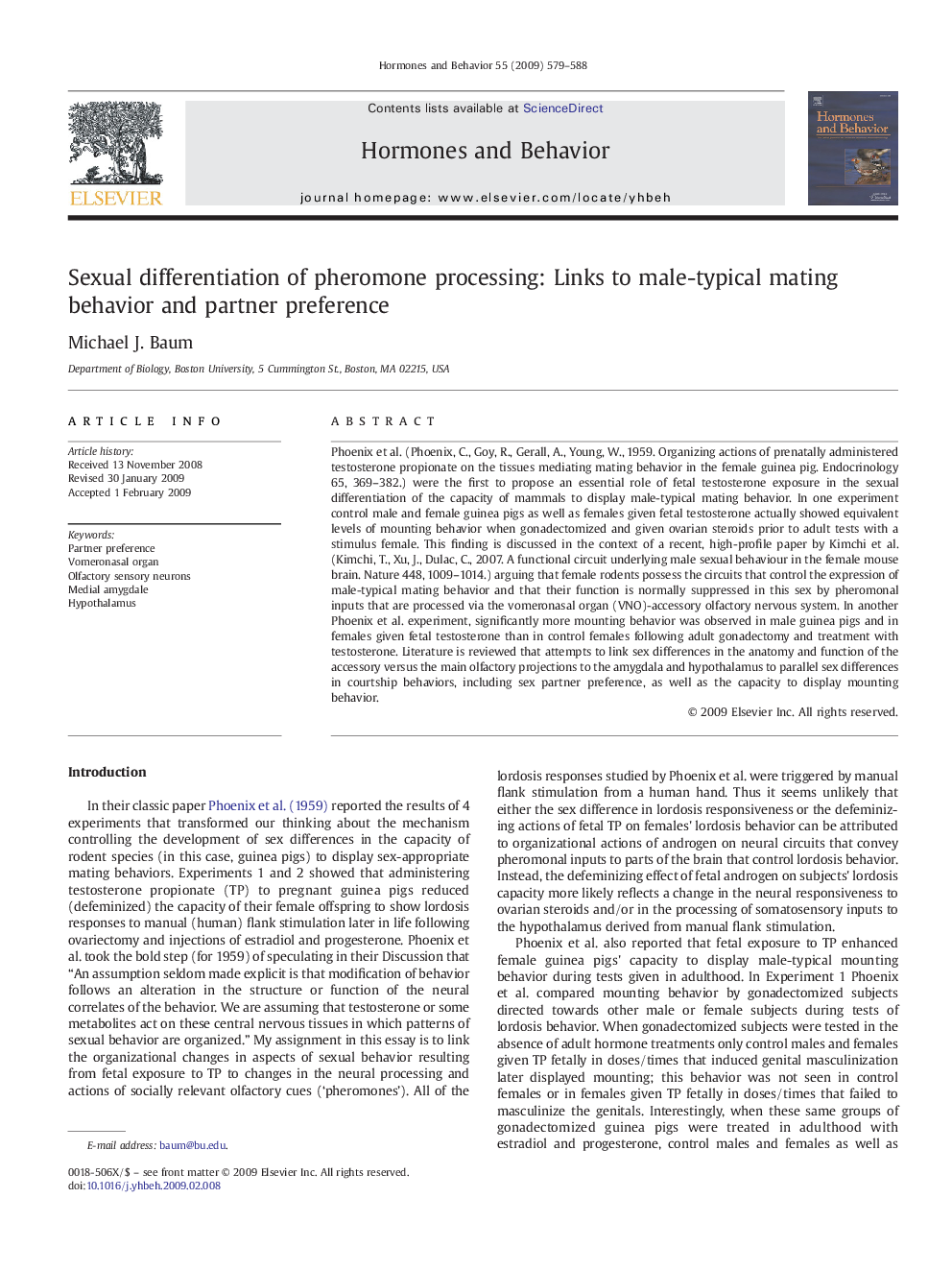| Article ID | Journal | Published Year | Pages | File Type |
|---|---|---|---|---|
| 324138 | Hormones and Behavior | 2009 | 10 Pages |
Phoenix et al. (Phoenix, C., Goy, R., Gerall, A., Young, W., 1959. Organizing actions of prenatally administered testosterone propionate on the tissues mediating mating behavior in the female guinea pig. Endocrinology 65, 369–382.) were the first to propose an essential role of fetal testosterone exposure in the sexual differentiation of the capacity of mammals to display male-typical mating behavior. In one experiment control male and female guinea pigs as well as females given fetal testosterone actually showed equivalent levels of mounting behavior when gonadectomized and given ovarian steroids prior to adult tests with a stimulus female. This finding is discussed in the context of a recent, high-profile paper by Kimchi et al. (Kimchi, T., Xu, J., Dulac, C., 2007. A functional circuit underlying male sexual behaviour in the female mouse brain. Nature 448, 1009–1014.) arguing that female rodents possess the circuits that control the expression of male-typical mating behavior and that their function is normally suppressed in this sex by pheromonal inputs that are processed via the vomeronasal organ (VNO)-accessory olfactory nervous system. In another Phoenix et al. experiment, significantly more mounting behavior was observed in male guinea pigs and in females given fetal testosterone than in control females following adult gonadectomy and treatment with testosterone. Literature is reviewed that attempts to link sex differences in the anatomy and function of the accessory versus the main olfactory projections to the amygdala and hypothalamus to parallel sex differences in courtship behaviors, including sex partner preference, as well as the capacity to display mounting behavior.
